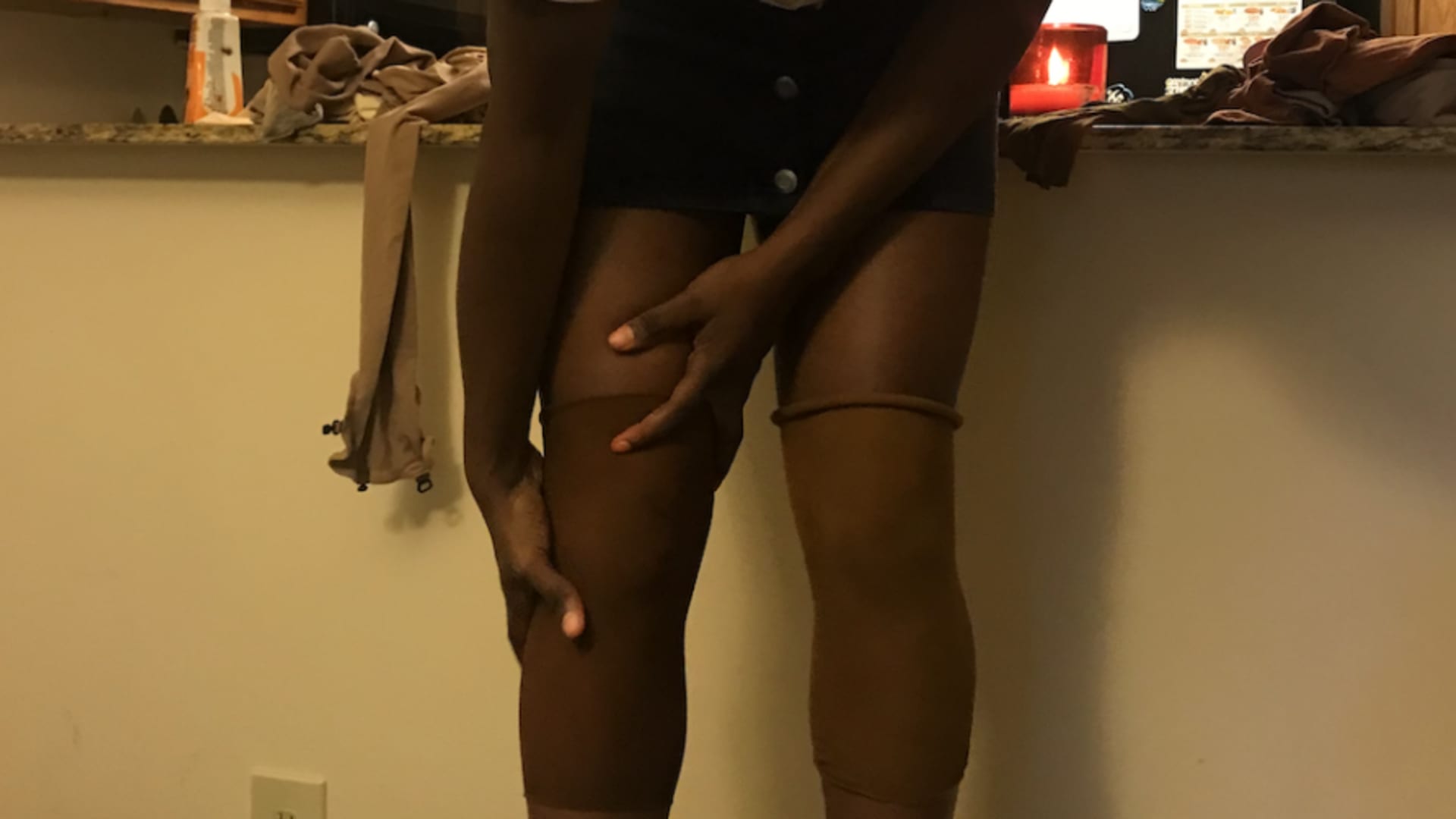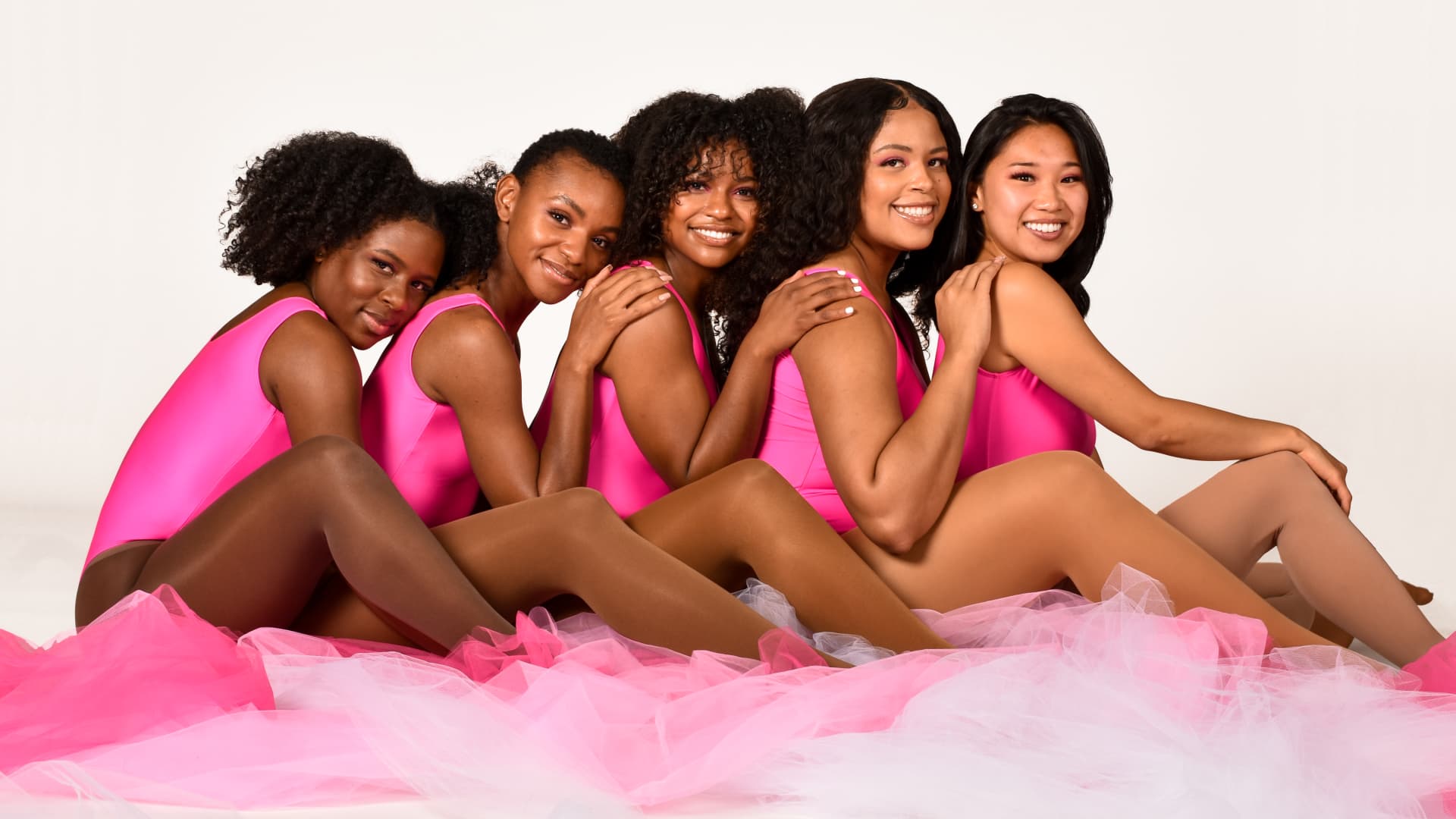
Imani Rickerby and Jasmine Snead had a problem.
It was 2017, and the College Park, Maryland-based synchronized skating coaches had preteen and teenage athletes falling apart during competitions. Confidence drained, their shoulders slumped before they even took to the ice.
The coaches, both Black women, knew what their predominantly Black team was competitively – and emotionally – struggling with. Rickerby, now 26, remembers her childhood teammates' matching makeup and tights complimented their complexions. Hers didn't. "I didn't feel like I belonged in the sport at all," she tells CNBC Make It.
With Sydney Parker, 25, a former dancer and their sorority sister at the University of Maryland, College Park, they started hand-dyeing their own tights. They bought dyes from craft stores and hand-mixed the colors with vinegar in their apartment, creating shades to match Black skin tones.
Feeling out of the loop? We'll catch you up on the Chicago news you need to know. Sign up for the weekly Chicago Catch-Up newsletter here.

Today, their start-up Aurora Tights claims to be the country's most inclusive hosiery brand, designing tights for hundreds of figure skaters, dancers, cheerleaders and gymnasts. That includes Team USA pairs skater Ashley Cain-Gribble, who is competing in the 2022 Winter Olympic Games in Beijing.
Team Canada pairs skater Vanessa James and two-time Olympian Maé-Bérénice Méité are also brand ambassadors, and U.S. skater Starr Andrews has her own shade of hosiery on the company's website. In Netflix's limited series "Inventing Anna," the faux heiress' friend Neff wears Aurora Tights in multiple episodes, the hosiery company says.
Money Report
Perhaps most notably, Aurora Tights is still a side-hustle — and a profitable one, too, according to the company. All three co-founders say they intend to keep their full-time jobs elsewhere, unless another company buys the brand.
An inclusive business model
Aurora Tights is a seasonal business: Performance-based sports teams typically prepare for their seasons between June and September. In their day jobs, Parker, Snead and Rickerby work for Meta, M&T Bank and Oak Street Health, respectively.
At first, the trio used their off time to hand-dye the hosiery — but quickly discovered that "mixing dye all day and all night" was "not scalable," Snead, 26, says. So, they found a manufacturer in North Carolina and outsourced production.
They also visited their alma matter's entrepreneurship center, which encouraged the co-founders to enter a series of pitching competitions. Between November 2018 and March 2019, they won $2,100 in prize money to put toward inventory. They also developed a vision for their brand: a direct-to-consumer company that also educates performance sports teams.

The brand currently offers six color shades. To create them, the co-founders mimicked the skin tones of some of their brand ambassadors — and named the shades after those athletes, rather than "types of coffee or things that you eat," Parker says. "We don't want to ever objectify people by what color their skin is."
It's working. Aurora Tights made just over $112,000 in sales last year — which may not seem like a lot when split between the three founders and their three contract workers, but it's mostly generated in just four months of sales.
Shades of change
The Covid-19 pandemic's arrival could have been a death knell. After picking up some business in 2019, Aurora Tights lost multiple contracts in 2020 — performers didn't need tights without shows and competitions.
Then came George Floyd's death in May 2020. Over the following summer, organizations like U.S. Figure Skating reached out to the company for educational tools during Black Lives Matter protests. The company hosted educational Zoom sessions, sent teams color swatches and encouraged performers to take an online quiz to find their closest Aurora Tights shade.
Gradually, Rickerby says, coaches became "receptive" to the idea that athletes could wear shades that matched their individual skin tones, rather than adhering to the same teamwide aesthetic. The mission has become contagious: Mondor, a much larger competitor, also now offers darker shades of tights.

That emphasizes Aurora Tights' need to grow. The co-founders say they want to expand into new product lines, hit 50,000 customers and make $1 million in annual revenue — all within the next five years.
It's ambitious, and it'll require more funding. Aurora Tights currently has $150,000 in funding from investors like the University of Michigan's Desai Accelerator. The relatively small number isn't for lack of trying: It's hard to explain the appeal – and need – of an inclusive hosiery brand to "investors who are predominantly white men," Rickerby says.
But customer feedback reinforces its importance. In August 2020, Aurora Tights began hosting virtual education sessions showcasing "performers of color," raising money for scholarships and nonprofits that encourage equity in performance-based sports. Recently, Rickerby and Parker attended an ice show for one of those nonprofits, New York City-based Figure Skating in Harlem.
They watched a group of young girls skate across the ice in Princess Tiana costumes, complete with tights that matched their skin tones. In that moment, Parker says, the side hustle's finances didn't matter. Only its mission.
"Seeing little girls run up and get excited to see their shade is always such a fulfilling moment," she says. "It reinforces why we're here."
Sign up now: Get smarter about your money and career with our weekly newsletter
Don't miss:
Your favorite Winter Olympic sport may depend on what state you’re from, according to a new analysis






